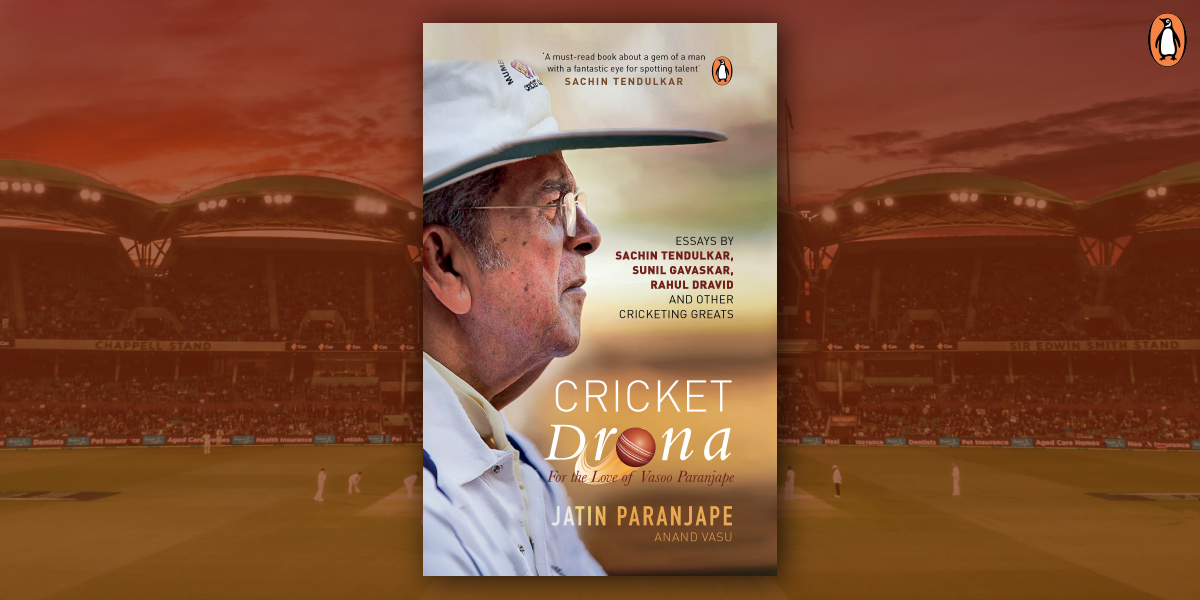India has a relationship of great adulation with cricket, marked by unbridled excitement. The game has shaped our national consciousness in many different ways, and is the lynchpin of patriotism and camaraderie in the country – even if we have nothing in common, there will always be cricket. A colonial inheritance, cricket exists at all the coordinates of our culture, from advertisements of soft drinks with cricketers smiling through the screen to entire feature films like Ashutosh Gowariker’s Lagaan. But we cannot talk about cricket without talking about Sachin Tendulkar. And we cannot talk about Sachin Tendulkar without talking about Vasoo Paranjape.
Ramakant Achrekar is the name we tend to associate with Sachin Tendulkar, but Vasoo Paranjape was the quiet pillar of influence who shaped the journey of the legendary batsman. Paranjape never laid any claims on his relationship with Tendulkar, and this is perhaps what makes Paranjape stand out as a mentor. There was no impulse of self-gratification in his interactions with the players, and at no point did he invest time and energy in them hoping for fame in return. This relationship was not unreciprocated; Cricket Drona tells us that Paranjape was the second person Tendulkar called when he had decided to announce his retirement from international cricket. Paranjape was bewildered about the call; he felt that he had played no significant part in Tendulkar’s life. But Tendulkar didn’t agree. ‘Sir, I know what you have done for me’, he said.
In his segment in Cricket Dhoni, Tendulkar recalls how Paranjape’s recommendation was instrumental in getting him selected for the West Indies tour. He knows Paranjape always had his best interests at heart, and from the chronicles of their interactions, this becomes amply clear. Paranjape had an eye for talent which he had carefully cultivated and which proved his words time and again. But the impact Paranjape had on Tendulkar was not limited to the pitch. There was a deep emotional influence as well, which is natural to any solid mentor-mentee relationship. In a part of his essay on Paranjape, Tendulkar discusses such an event:
“Vasoo Sir was watching this Irani Trophy match with my father. My father would never watch me play—he had this superstition that if he watched me play, I would get out early. But apparently, Vasoo Sir had convinced him to come to this game. Sir took out his 1955 Fiat and drove my father to the venue, telling him, ‘Don’t worry, he won’t get out… If your presence was reason enough for him to get out, all the schools in Mumbai would want to hire you as their principal.’ My father simply laughed and got into the car. I am forever indebted to Sir for this. My father watched me play live only on two occasions, and this was one of them. The memory makes me very emotional.”
Paranjape worked with players as individuals with their unique propensities and characteristics. “I had a very unorthodox batting grip, with both hands way down the bat’s handle”, writes Sachin. But Paranjape did not try to change this. Instead, he focused on the strategies of the game, studying the opposition, playing a good stretch at an innings, things that opened up the beauty of the game for Tendulkar. “[W]hen I worked a little more closely with him, I understood that Sachin had another great power: the power to forget. He was able to erase the memory of the previous ball or the previous innings from his immediate focus. This is the factor that separates the greats from the non-greats: the ability to shut out what’s happened in the past and stay in the present. This, to me, is one of his biggest strengths”, writes Paranjape about Tendukar, revealing how nuanced his reading of the player was. He was able to notice every detail of what makes a player stand out.
Behind every person who is outstanding in their field is the work and influence of mentors, coaches and teachers, people who shape and modulate individual talent into a set of redoubtable skills. These skills become indispensable, and become the characteristic element of people who are larger than life, whose lives and performances are scintillating to a degree where they become more than human. In more ways than one, Vasoo Paranjape drove Tendulkar to become what he is. Cricket Drona is an homage to the man who became the strength and support of many cricket legends.
[To read more about Vasoo Paranjape, order you copy of Cricket Drona here!]








